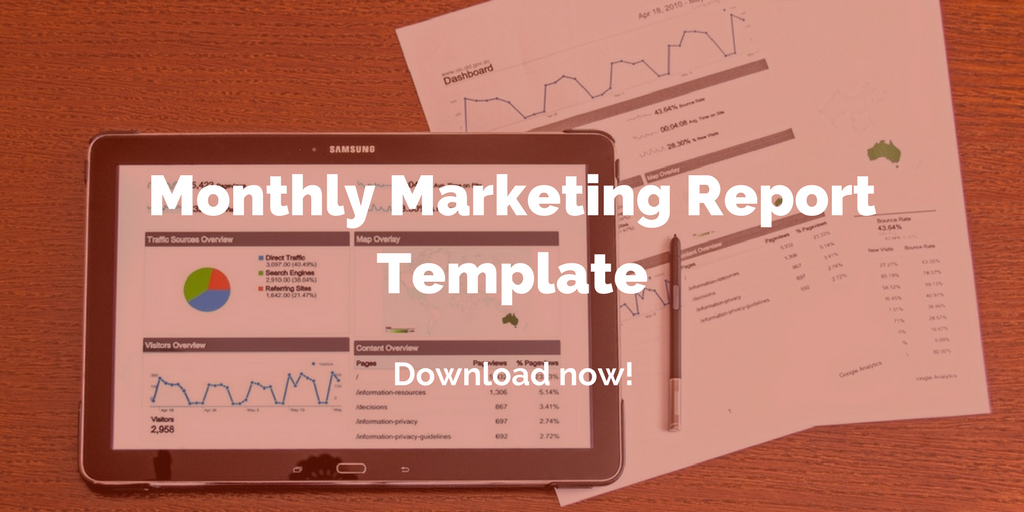
by Fronetics | Sep 25, 2017 | Blog, Content Marketing, Marketing, Social Media, Strategy
Use the first months to lay a solid foundation for your content marketing program so it can begin generating leads and sales.
So you decided it was time to jump into the content marketing game. You’ve been crafting the perfect content. You’re posting on a regular basis. You’ve identified your target audience and have been researching keywords. You’ve even learned a thing or two about SEO.
But you have no leads or sales to speak of. And your boss is breathing down your neck for results, FAST. Is it time to throw in the towel? Absolutely not!
Content marketing is a long-term solution that helps businesses build brand awareness, grow their audience, and generate new leads and sales. But, like any good relationship, it takes time and effort to achieve results. You shouldn’t give up before the seeds you sow have time to bear fruit.
To understand the time table for content marketing, let’s look at some markers for the first six months.
Month one
Learn about your target audience and understand their needs.
In order to get the ball rolling in content marketing, you have to understand who you are trying to reach. It’s important to think holistically when considering who you are trying to reach at a potential prospects’ company. Typically, your target audience falls into two categories: Primary (decision makers) and Secondary (influencers of the decision maker). Going one step further, you need to identify your target audience’s needs and pain points so that you can direct your content marketing strategy at creating awareness around those needs.
Document a content marketing strategy.
You would never operate your business without 1) creating a strategy, 2) documenting it, and 3) following the strategy. A content marketing strategy outlines the methods by which you will target, reach, and engage your audience. Research and execution of these tasks can be quite complex. Writing out a plan and assigning appropriate resources can offer clarity and guidance to your organization throughout the course of your program.
Month three
Create and publish content.
93% of B2B marketers use content marketing. However, less than half (42%) of B2B marketers say that they are effective at content marketing. One of the reasons these marketers are ineffective: bad content.
When you are creating and curating content for your business, focus on original content that stands out to current and prospective customers. Valuable and relevant content is not a sales pitch. Rather, it is content that communicates valuable information to customers and prospects so that they have the knowledge to make more informed decisions. Moreover, it is content that establishes your business as a reliable source of knowledge — as the thought leader within the industry.
Promote content on multiple channels.
Understanding your target audience and which social media platforms they’re using is invaluable information. If you want to reach potential and current customers, you need to be where they are. You need to make it easy for them to find you and to engage with your business. And if your competitors are already active on social media, start by finding out where. If these platforms align with your ideal customer, don’t be afraid to kick start your social media presence alongside them.
Month six
Analyze your performance.
Track and analyze your metrics on a daily, weekly, monthly, and annual basis. Take a look at what is working and what is not. By tracking and analyzing your metrics you can see, for example, what type of content is most effective and which distribution channels are helping you achieve your goals. You’ll also be able to find opportunities for improvement. Look at the feedback you are getting through your engagement with customers and prospects, and make adjustments to your strategy as needed.
Expand your content creation.
If you’re focused on growing your business or creating awareness through the creation of engaging content, then you need to be ready to try new things. Have you been successful with blogging and Facebook posts? Then it’s time to try making videos and joining Twitter. And don’t be afraid to pull from other worthy sources. Content curation will serve to establish your business as a trusted resource and increase your brand visibility, all without over-promoting yourself.
Remember that when it comes to content marketing, it is important to think: marathon not sprint. An effective content strategy requires patience and determination. Many companies make the mistake of giving up on a content strategy too early. Give your relationship with content marketing time to play out, and don’t be afraid to adjust your strategy along the way if you find some things are working better than others.
Related posts:

by Fronetics | Sep 12, 2017 | Blog, Current Events, Marketing
Fronetics announces the official launch of sister brand, Fronetics Real Estate, serving residential and commercial real estate clients.
It’s a big day for Fronetics! We’re officially launching our new brand, Fronetics Real Estate (FRE), offering digital and content marketing services to residential and commercial real estate clients.
Over the last two decades, real estate has seen a major shift in buyer behavior, with buyers now conducting the majority of their research online. Content marketing is an approach that puts real estate marketers in charge of the way prospective buyers and tenants perceive and interact with their properties. The strategic creation and distribution of content helps properties:
- Build brand awareness
- Generate prospects
- Lower cost per lead
- Increase occupancy
- Drive sales
- Improve retention
As content marketing experts, Fronetics Real Estate is uniquely positioned in the real estate industry. Firstly, we have a proven history of success with content marketing for real estate. Our clients benefit from having a dedicated account team that works exclusively with real estate clients — they know how to help them succeed.
Secondly, our approach is unique in that it starts with data and ends with measurable results. We design and execute a strategy that aligns with your business objectives. That way, our clients see movement where it matters: lower cost per lead, higher occupancy, and faster sales.
Real estate marketing services
Fronetics Real Estate’s portfolio of digital and content marketing services includes:
- Content marketing: strategy development, content creation, and execution
- Social media: strategy, management, distribution, advertising
- Email marketing: templates, marketing emails, workflows, and newsletters
- Website development: branding, design, maintenance, and content creation
- Paid advertising: pay-per-click and social media advertising
- Sales enablement: reporting and analysis, sales content optimization, automation
Whether you have luxury condominiums, for-rent apartments, a planned community, commercial properties, or mixed-use/retail space, we would love to show you about how Fronetics Real Estate can help you reach today’s prospective buyers and tenants.
Read the official press release or visit our newly launched Fronetics Real Estate website to learn more about FRE.

by Fronetics | Sep 6, 2017 | Blog, Content Marketing, Marketing, Strategy
Find the right marketing outsource partner for your business by asking specifically about strategy development, industry experience, and more.
More and more supply chain companies are choosing to outsource their marketing, giving them the flexibility to focus on their core business, while leaving marketing to trusted experts. But before you jump into a partnership, it’s important to remember that not all marketing firms are created equal.
To help you decide if a marketing firm is right for your business, here are 10 questions you should be asking potential marketing partners — and what to listen for in the answers.
10 questions to ask marketing outsource partners
1) How do you develop a strategy?
The word you should be listening for is: individualized. Your marketing partner should build a strategy specifically tailored to your business, based on data, analytics, and your company’s goals.
2) What would my account team look like?
When you outsource your marketing, look for a team of experts that work together to improve the various aspects of your marketing strategy. For example, the person running your social media presence should have specific social media expertise.
3) Do you know my industry?
It’s vitally important that your marketing partner has a deep understanding of your company, your industry, and your customers. Don’t be satisfied with a surface knowledge, or with a marketing firm that doesn’t have personnel that specializes in your industry.
4) How do you measure success?
Your marketing partner needs to have a plan in place to provide you regular and frequent reports showing designated metrics that match the goals of your strategy. For instance, if one of your business’ goals is to increase brand awareness, web traffic and social impressions are two metrics you should be getting reports on every month.
5) What other services do you offer (even if I don’t need them yet)?
Many of Fronetics’ clients start off wanting only one of our services (like social media management), but quickly realize a multi-channel digital strategy would better help them reach their goals. You want to know that, if you need to expand your scope of work to include more services (such as social advertising or video creation), your partner can handle those.
6) Do you offer training?
We’ve all heard the old adage about teaching a man to fish. While it can be hugely beneficial for your business to trust your marketing strategy to the experts, part of a well-rounded strategy includes educating key members of your staff, such as sales personnel, on how the rest of your business’ operations can dovetail with your marketing strategy. A partner who offers workshops or other types of training is a plus.
7) What is your philosophy for content creation?
Listen for a partner who listens to you. If you’re going to outsource content creation, your partner needs to be ready to learn every aspect of your business, its goals, and its philosophies — and to create content that reflects those things.
8) Do you have videography capability?
Even if you don’t think your business needs video content right now, chances are, this new wave content platform will be something you need at some point. You want to find a partner who can easily help you make strides in this area — whether the partner handles video production in house or will manage a third-party vendor for you.
9) What are your goals for my business?
You want a partner who shares your company’s vision. But it’s a bonus if you can find a partner who offers you goals you hadn’t even considered but that make sense for your business.
10) What’s the first thing you’re going to do when I hand over my business’ marketing strategy to your firm?
While it might be exciting to hear an answer like “revamp your entire web presence,” the savvier business listens for something a little different. A partner who assures that they will first seek to analyze, research, and understand every aspect of your unique business will ultimately be more likely to guide you to your goals. Once they know the ins and outs, then it’s time for the revamping!
Related posts:


by Fronetics | Sep 5, 2017 | Blog, Content Marketing, Marketing, Social Media
Use Quora to answer potential customers’ questions, and they’ll perceive you as a valuable source of knowledge and an industry thought leader.
Despite gaining popularity over the last several years, Quora’s potential as a marketing tool for supply chain and logistics companies remains largely untapped.
In case you haven’t jumped on the bandwagon yet, Quora touts itself as “a place to share knowledge and better understand the world.” It’s a simple premise, but one that’s been highly effective since its founding in 2009: “It’s a platform to ask questions and connect with people who contribute unique insights and quality answers.” Essentially, the site is a community-generated question-and-answer forum.
How does Quora work?
Anyone can ask or answer questions on Quora. A key feature of the site is voting feature: community members vote on which answers are most helpful, boosting those responders’ visibility and credibility. A few other things the site allows you to do:
- Target your question to specific users;
- Publish content (much like LinkedIn’s publishing platform);
- Search for questions or topics relevant to your business, and follow these keywords to get notifications of new questions.
You might already be starting to see the exciting potential in this social media platform. But let’s talk about three specific ways you can use Quora to build your brand, generate leads, and engage with your potential buyers.
3 ways supply chain and logistics marketers can use Quora
1) Research
Using Quora is about gaining and spreading knowledge. Your peers and competitors might be talking about their new projects with an audience that’s actively offering feedback on what it wants or doesn’t want. Before even jumping in with your own content, just staying attuned to the conversation can be a valuable resource as your business builds its marketing strategy.
2) Building and maintaining connections
Relationship-building is a key benefit of using Quora. While sites like LinkedIn and Twitter are valuable for quicker engagement, Quora offers a forum for substantive conversations, a crucial building block for lasting buyer engagement.
The site also offers a great opportunity to reach beyond your normal sphere. Emma MacAnnally of Torchlight suggests: “Don’t be afraid to ask questions and engage in conversations with others you respect and admire.” She points out that doing this will broaden your audience, offer new insights, and give you recognition with thought leaders in your field. “Networking can happen anywhere,” she says.
3) Reputation building
Quora offers you the ability to run a quick search of your business’ name, and tune in to what’s being said about your brand. Also, by answering others’ questions with substantive, reliable content, you can become a resource for potential buyers, as well as others in the industry.
Your business is more than its product. You can offer your audience valuable knowledge. Quora gives you a direct way to answer the questions that your potential buyers are asking, building your reputation as a resource for knowledge and as an industry thought leader.
Related posts:


by Jennifer Hart Yim | Aug 24, 2017 | Blog, Content Marketing, Manufacturing & Distribution, Marketing, Supply Chain
Here are seven tips for manufacturers to improve your email marketing strategy in the manufacturing and industrial sector.
This post comes to us from Adam Robinson of Cerasis, a top freight logistics company and truckload freight broker.
Email marketing is a powerful tool for growing and developing different types of businesses. However, many industries are still unaware of the power of using an appropriate email marketing strategy. Many manufacturers and industrial companies are still stuck in the one-off batch and blast mode of email marketing. That strategy is not likely to work very well in industrial marketing, where most of the purchases are expensive; complex products with long sales cycles, multiple decision-makers, and stakeholders are involved; and there is a much higher risk if a wrong decision is made.
7 email marketing tips for manufacturers
1. Avoid SPAM at all costs
The last thing that you want is for your emails to end up in someone’s spam folder or have your emails banned from someone’s inbox. Before you even start an email marketing campaign, you should print out the latest copy of the CAN-SPAM act to remind yourself of some email marketing principles, such as any recipient must have given their consent before receiving commercial email, have an option to unsubscribe from receiving further emails, do not mislead the recipient about the content or the origin of the email, and use approved methods to get a recipient’s email address.
2. Personalize your emails
You should avoid sending generic emails. Your recipients are not all the same, and you should make distinctions between them by segmenting your database. This means sending the same type of email diversified in some key aspects depending on the type of recipient. The content and filters of platforms such as Litmus and Reach Mail, which is based on personal data, geography, activity, and devices used, let you automate the entire process to narrow your focus and identify the ideal sub-section of your list.
3. Increase your traffic and clicks
By creating the perfect email marketing campaign, you will have the power to turn emails into clicks and traffic to your website. Sending relevant links to your subscribers will drive them to your website, and this increases the potential for new sales. If you want to give a real boost to your click-thru rates, you should keep in mind that you have to get rid of the clutter. Having an email that has too many graphics and banners will confuse your readers and leave them wondering what they are supposed to click on.
4. Offer quality content
You should always provide useful, quality content in an email and links to further information. Your emails should be more informative than sales-related, especially in the manufacturing industry. Talk about your company’s safety standards, advertise interviews with experts, and discuss pressing matters in your industry. Not presenting your information in a clear and accurate way will put off your recipients. You can take advantage of online tools to help you with your content writing. Use Australian Help and Oxessays as copywriting tools for writing your emails and Bigassignments to help you to edit your content. [Editor’s note: You can also partner with a third-party marketing firm to develop and execute an email marketing strategy for your business.]
5. Optimize your subscriber list
Do not rush out and buy an email list to get started with email marketing. You should grow your in-house subscriber list and get to know your customers and what they need from you.
6. Link your email platform with other channels
Email platforms, external databases, e-commerce, social media, and business intelligence systems can all be linked to optimize your business and reach more potential clients. Platforms such as Mail Chimp and Mad Mimi allow you to connect and integrate every system, synchronize the information on each, and have them communicate with each other.
7. Automation and tracking
You should try to make your email marketing strategy as efficient as possible with email marketing automation. Platforms such as the mentioned Litmus and Reach Mail will let you automate the entire process. Analyzing and tracking your campaigns’ performance is also essential. Using the analysis tools and reports available from the platforms we suggested will allow you to check and optimize your clicks, traffic, and sales.
Wrapping up the 7 email tips for manufacturers
There are many things to consider when creating an email marketing campaign. The main goal is to effectively connect with potential customers to persuade them to purchase your product by reminding them that you exist and that you are helping. Use these email tips for manufacturers to continually improve your sales and grow your industrial business.
Related posts:








